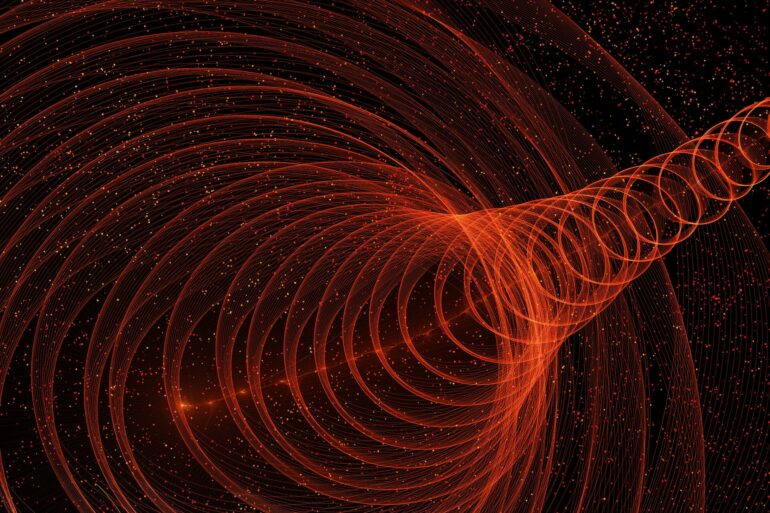Tachyons are hypothetical particles that travel at speeds greater than the speed of light. These superluminal particles, are the “enfant terrible” of modern physics. Until recently, they were generally regarded as entities that did not fit into the special theory of relativity.
However, a paper just published in Physical Review D by physicists from the University of Warsaw and the University of Oxford has shown that many of these prejudices were unfounded. Tachyons are not only not ruled out by the theory, but allow us to understand its causal structure better.
Motion at speeds beyond the speed of light is one of the most controversial issues in physics. Hypothetical particles that could move at superluminal speeds, called tachyons (from the Greek tachýs—fast, quick), are the “enfant terrible” of modern physics. Until recently, they were widely regarded as creations that do not fit into the special theory of relativity.
At least three reasons for the non-existence of tachyons within quantum theory were known so far. The first: the ground state of the tachyon field was supposed to be unstable, which would mean that such superluminal particles would form “avalanches.” The second: a change in the inertial observer was supposed to lead to a change in the number of particles observed in his reference system, yet the existence of, say, seven particles cannot depend on who is looking at them. The third reason: the energy of the superluminal particles could take on negative values.
Meanwhile, a group of authors: Jerzy Paczos, pursuing his Ph.D. at the University of Stockholm, Kacper Dębski, finishing his Ph.D. at the Faculty of Physics, Szymon Cedrowski, a final-year Physics (Studies in English) student, and four more experienced researchers: Szymon Charzyński, Krzysztof Turzyński, Andrzej Dragan (all from Faculty of Physics, University of Warsaw) and Artur Ekert from Oxford University, have just pointed out that the difficulties with tachyons so far had a common cause. It turned out that the ‘boundary conditions’ that determine the course of physical processes include not only the initial state but also the final state of the system.
Mixing past and future
To put it simply: in order to calculate the probability of a quantum process involving tachyons, it is necessary to know not only its past initial state but also its future final state. Once this fact was incorporated into the theory, all the difficulties mentioned earlier completely disappeared and tachyon theory became mathematically consistent.
“It’s a bit like internet advertising—one simple trick can solve your problems,” says Andrzej Dragan, chief inspirer of the whole research endeavor.
“The idea that the future can influence the present instead of the present determining the future is not new in physics. However, until now, this type of view has at best been an unorthodox interpretation of certain quantum phenomena, and this time we were forced to this conclusion by the theory itself. To ‘make room’ for tachyons we had to expand the state space,” concludes Dragan.
The authors also predict that the expansion of the boundary conditions has its consequences: a new kind of quantum entanglement appears in the theory, mixing past and future, which is not present in conventional particle theory. The paper also raises the question of whether tachyons described in this way are purely a ‘mathematical possibility’ or whether such particles are likely to be observed one day.
According to the authors, tachyons are not only a possibility but are, in fact, an indispensable component of the spontaneous breaking process responsible for the formation of matter. This hypothesis would mean that Higgs field excitations, before the symmetry was spontaneously broken, could travel at superluminal speeds in the vacuum.
More information:
Jerzy Paczos et al, Covariant quantum field theory of tachyons, Physical Review D (2024). DOI: 10.1103/PhysRevD.110.015006. On arXiv: DOI: 10.48550/arxiv.2308.00450
Provided by
University of Warsaw
Citation:
Physicists suggest tachyons can be reconciled with the special theory of relativity (2024, July 11)



